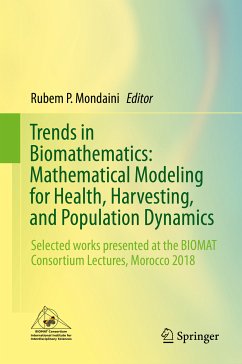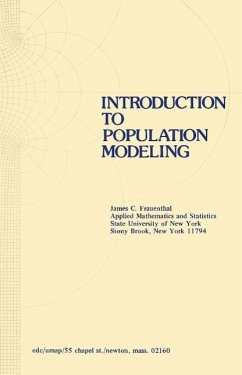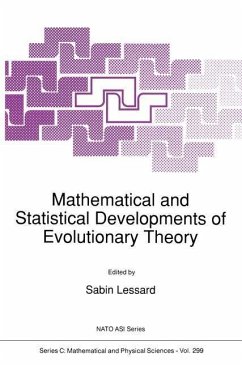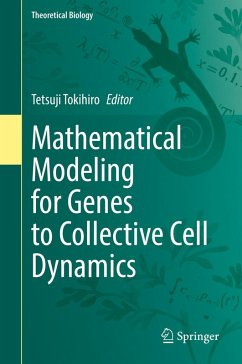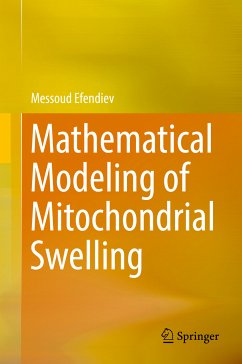
Mathematical Modeling of Complex Biological Systems (eBook, PDF)
A Kinetic Theory Approach

PAYBACK Punkte
36 °P sammeln!
This book describes the evolution of several socio-biological systems using mathematical kinetic theory. It is one of the first books to apply mathematical kinetic theory to biological systems.Specifically, it deals with modeling and simulations of biological systems whose dynamics follow the rules of mechanics as well as rules governed by their own ability to organize movement and biological functions. The authors propose a new biological model for the analysis of competition between cells of an aggressive host and cells of a corresponding immune system. The proposed models are related to the...
This book describes the evolution of several socio-biological systems using mathematical kinetic theory. It is one of the first books to apply mathematical kinetic theory to biological systems.
Specifically, it deals with modeling and simulations of biological systems whose dynamics follow the rules of mechanics as well as rules governed by their own ability to organize movement and biological functions. The authors propose a new biological model for the analysis of competition between cells of an aggressive host and cells of a corresponding immune system. The proposed models are related to the generalized Boltzmann equation. The book is for a broad audience of applied mathematicians, bioengineers, and graduate students. It may be used for advanced graduate courses and seminars in biological systems modeling with applications to collective social behavior, immunology, and epidemiology.
Specifically, it deals with modeling and simulations of biological systems whose dynamics follow the rules of mechanics as well as rules governed by their own ability to organize movement and biological functions. The authors propose a new biological model for the analysis of competition between cells of an aggressive host and cells of a corresponding immune system. The proposed models are related to the generalized Boltzmann equation. The book is for a broad audience of applied mathematicians, bioengineers, and graduate students. It may be used for advanced graduate courses and seminars in biological systems modeling with applications to collective social behavior, immunology, and epidemiology.
Dieser Download kann aus rechtlichen Gründen nur mit Rechnungsadresse in A, B, BG, CY, CZ, D, DK, EW, E, FIN, F, GR, HR, H, IRL, I, LT, L, LR, M, NL, PL, P, R, S, SLO, SK ausgeliefert werden.




